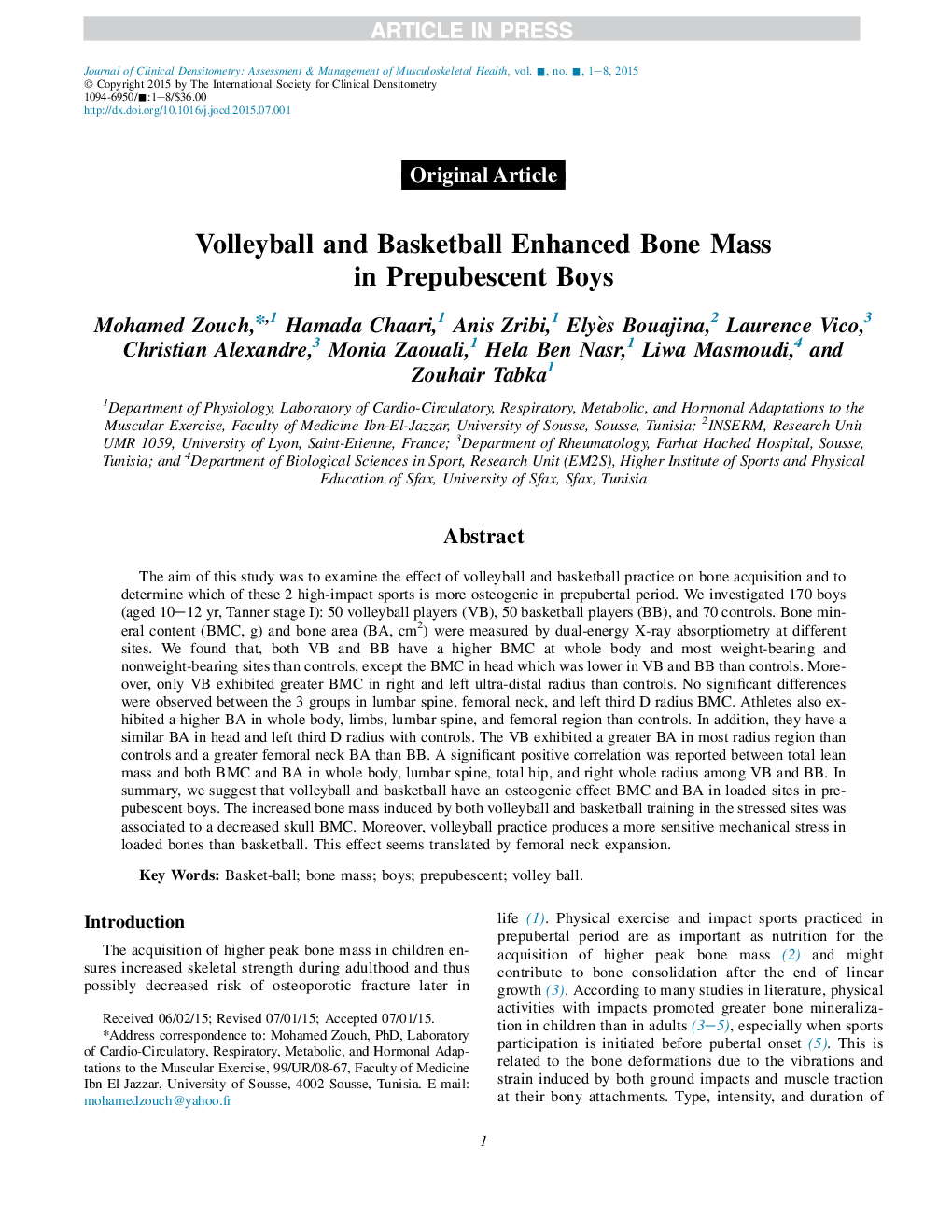| Article ID | Journal | Published Year | Pages | File Type |
|---|---|---|---|---|
| 8723297 | Journal of Clinical Densitometry | 2016 | 8 Pages |
Abstract
The aim of this study was to examine the effect of volleyball and basketball practice on bone acquisition and to determine which of these 2 high-impact sports is more osteogenic in prepubertal period. We investigated 170 boys (aged 10-12 yr, Tanner stage I): 50 volleyball players (VB), 50 basketball players (BB), and 70 controls. Bone mineral content (BMC, g) and bone area (BA, cm2) were measured by dual-energy X-ray absorptiometry at different sites. We found that, both VB and BB have a higher BMC at whole body and most weight-bearing and nonweight-bearing sites than controls, except the BMC in head which was lower in VB and BB than controls. Moreover, only VB exhibited greater BMC in right and left ultra-distal radius than controls. No significant differences were observed between the 3 groups in lumbar spine, femoral neck, and left third D radius BMC. Athletes also exhibited a higher BA in whole body, limbs, lumbar spine, and femoral region than controls. In addition, they have a similar BA in head and left third D radius with controls. The VB exhibited a greater BA in most radius region than controls and a greater femoral neck BA than BB. A significant positive correlation was reported between total lean mass and both BMC and BA in whole body, lumbar spine, total hip, and right whole radius among VB and BB. In summary, we suggest that volleyball and basketball have an osteogenic effect BMC and BA in loaded sites in prepubescent boys. The increased bone mass induced by both volleyball and basketball training in the stressed sites was associated to a decreased skull BMC. Moreover, volleyball practice produces a more sensitive mechanical stress in loaded bones than basketball. This effect seems translated by femoral neck expansion.
Keywords
Related Topics
Health Sciences
Medicine and Dentistry
Endocrinology, Diabetes and Metabolism
Authors
Mohamed Zouch, Hamada Chaari, Anis Zribi, Elyès Bouajina, Laurence Vico, Christian Alexandre, Monia Zaouali, Hela Ben Nasr, Liwa Masmoudi, Zouhair Tabka,
